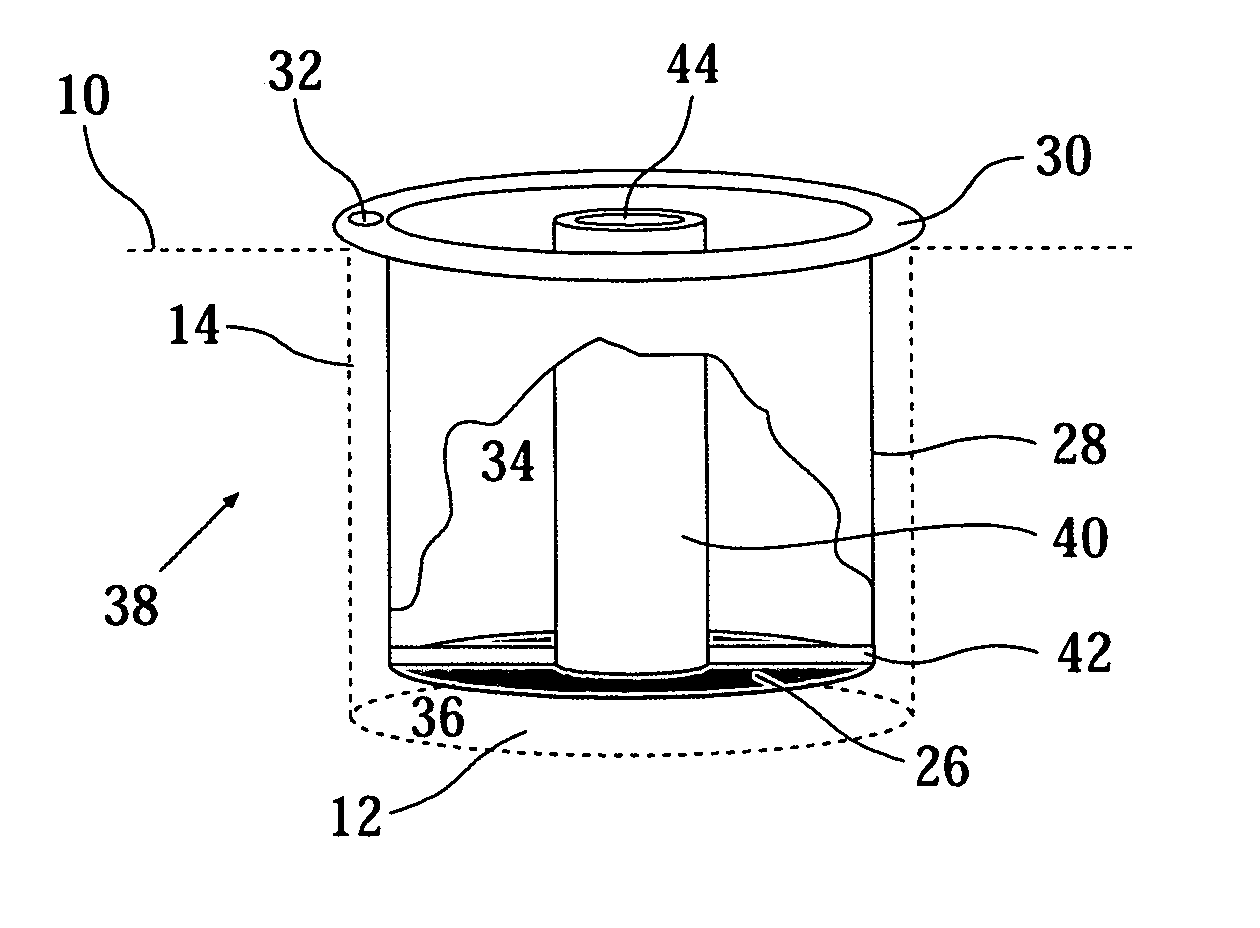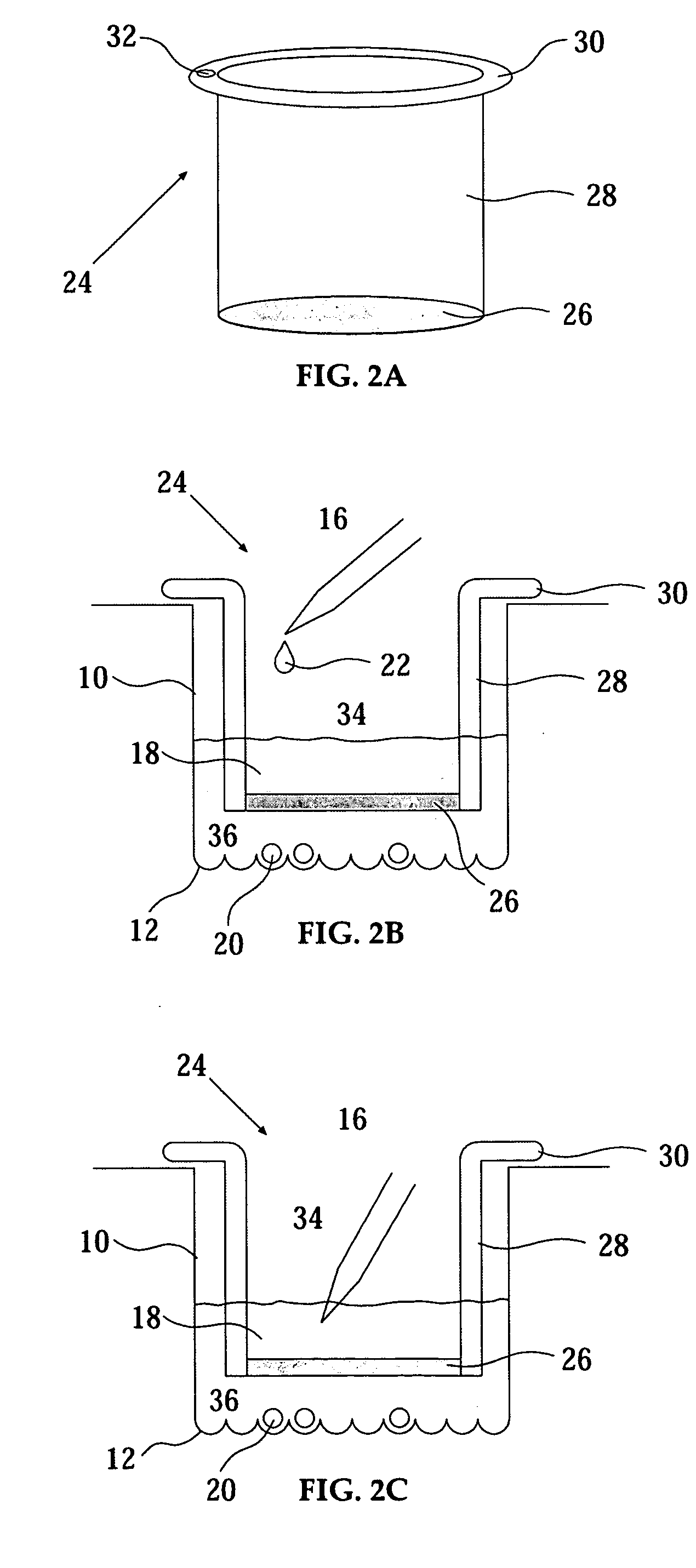Current damper for the study of cells
a current damper and cell technology, applied in the field of scientific devices, can solve the problems of limited utility of studies, affecting the study of cells, so as to prevent or reduce currents
- Summary
- Abstract
- Description
- Claims
- Application Information
AI Technical Summary
Benefits of technology
Problems solved by technology
Method used
Image
Examples
Embodiment Construction
[0092] The present invention is of a device for the study of cells comprising a vessel for holding cells, where the cells rest on the bottom surface of the vessel, and a current damper including a damping component substantially disposed within the vessel. The present invention is also of a current damper configured to be placed in, or disposed within, a vessel. The present invention is also of a method for using a device of the present invention. While a cell or cells are resting on the bottom surface of the vessel a material (e.g., a liquid or solid reagent) is added to the vessel or a device (e.g., a probe or a detector) is placed in the vessel. The damping component preferably damps currents caused by the addition of the material or the placement of the device that would otherwise cause movement of the cell or cells. The damping component preferably also damps currents caused by movement of the vessel that would otherwise cause movement of the cell or cells.
[0093] The principle...
PUM
 Login to View More
Login to View More Abstract
Description
Claims
Application Information
 Login to View More
Login to View More - R&D
- Intellectual Property
- Life Sciences
- Materials
- Tech Scout
- Unparalleled Data Quality
- Higher Quality Content
- 60% Fewer Hallucinations
Browse by: Latest US Patents, China's latest patents, Technical Efficacy Thesaurus, Application Domain, Technology Topic, Popular Technical Reports.
© 2025 PatSnap. All rights reserved.Legal|Privacy policy|Modern Slavery Act Transparency Statement|Sitemap|About US| Contact US: help@patsnap.com



